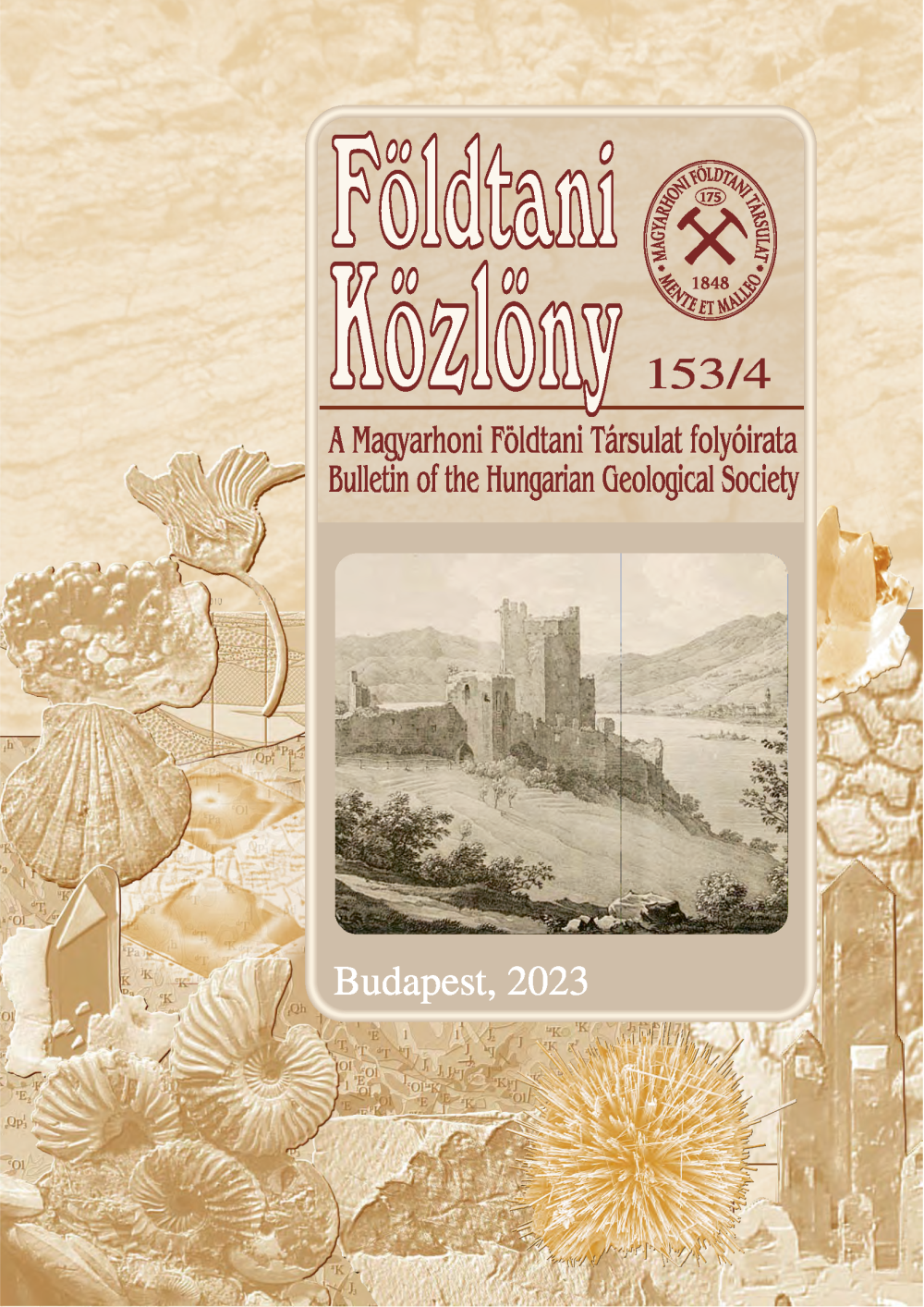Petrographic and geochemical studies on the Upper Cretaceous (?) travertine cone and red calcites (Vértes Mts., Hungary)
Abstract
Carbonate cone and red calcite debris occurrences were found in the Vértes Mts. (Transdanubian
Range, Hungary). Petrographic and geochemical studies of one well developed travertine cone and six
calcite vein occurrences were carried out to determine the formation of the carbonates that can be clearly
distinguished from the surrounding Triassic Main Dolomite.
The carbonate cone exhibits a special structure: vertically bedded carbonate characterize the middle
part of the cone, whereas on the rims and along the slope the beddings' dipping is less steep: 10-30°. The
carbonate itself has a typical travertine texture: the spring cone consists of massive, layered and porous
calcite. The occurrence can be described as a travertine spring cone.
EMPA techniques was used to determine the composition of the accessory minerals. The carbonate
consists of calcite but minor amount of xenomorphic zircon, xenotime and monazite were also identified
enclosed in the calcite. According to the analyses, it can be concluded that these accessory minerals are
related to deep-derived fluids that has no connection to the surrounding Mesozoic karst system.
Trace and rare earth elements (REE) analysis of bulk rock analysis, using neutron activation analysis
(INAA), show that the spring cone is relatively enriched in LREEs particularly at the vent-facies. A
positive U anomaly was also observed relative to the surrounding carbonates and other travertine
deposits.
The measured 8 1 8 0 and 81 3C (24,5%o and -8,5%o respectively, as average of 50 samples) values are in
agreement with those of the previously studied red calcite dikes widely occurring in the Transdanubian
Range, but differs from the surrounding Triassic dolomite and from the Pleistocene travertines. A Late
Cretaceous and pre-Middle Eocene age was suggested for the red calcite dykes on the Sümeg and
Tatabánya occurrence, respectively. The isotopic range of the samples studied indicates that magmatic
C 0 2 played an important role during the carbonate formation. Magmatic fluids may be associated with
lamprophyre dykes recognized in the area.
The measured 8 1 8 0 values of the studied carbonate cone suggest that approximately 10 °C
temperature drop occurred along the flow direction from vent to rim.
On the base of the distribution of the 81 3C values (Fig. 5), we can distinguish concentric zones: from
the vent facies the 81 3C values increase towards to the rim facies caused by C0 2 degassing. The low 81 3C
values exclude the importance of dolomite mobilization as a cause of travertine formation.











